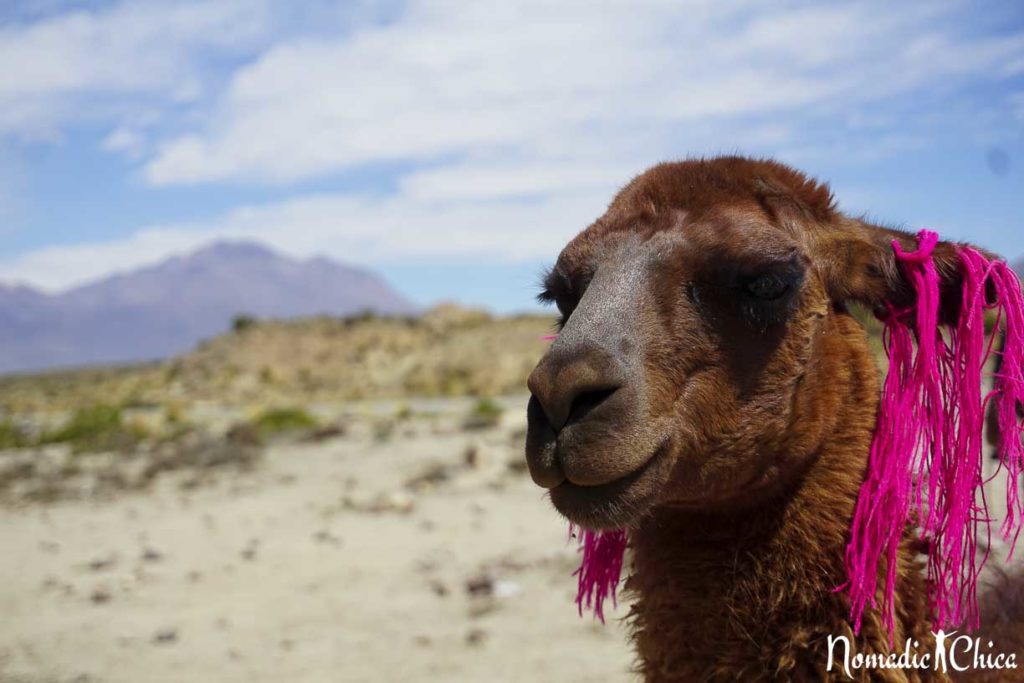If you are planning your trip to Cusco and Machu Picchu you’ve probably heard of altitude sickness. If you still have not, here I tell you that is and how to avoid it.
Anywhere in the highlands in the Andes, you will be exposed to great heights that can ruin the first days of your trip.
It will probably start like this:
You came to Cusco airport from a trip that ends in an impressive landing in Alejandro Velasco Astete International Airport. You get to your hotel and all you want is to walk around the city with which you dreamed for so many months. So you leave your stuff and go out to explore, highly motivated, taking pictures, up and down the stairs, you’re so happy that you have not had even hunger or thirst, so you keep exploring and having a blast.
Suddenly … a headache you thought was a product of fatigue becomes unbearable, you feel weak and your stomach is doing strange things with you.
Yuhuuuu You are probably “apunado” suffering from altitude sickness, or the named “Soroche”.

You can read more about Getting to Machu Picchu on your own
One of the most unpleasant sensations that I felt traveling. It happened to me several times. The first one was due to not to believing it would happen to me and the other, perhaps cause it found me very tired.
What is it that altitude produces in our body?
Up to 2500m altitude, barometric air pressure is very similar to that found in the pressurized cabin of an airplane and the body functions normally.
But in higher altitudes, the body changes its physiology and uses most of its energy to carry oxygen to organs like lungs, heart, and brain.
One of the major complications we can suffer when we travel to destinations located in height is related to the lack of oxygen in the in the atmosphere and therefore in our blood.

When you rise rapidly to a high altitude, the body has to adapt to a less dense air and lack of oxygen. Almost immediately two important things happen:
The person breathes more deeply and quickly to maximize the amount of oxygen that can reach the blood from the lungs.
The heart pumps blood to increase oxygen supply to the brain and muscles.
If the body fails to adapt, it can suffer an acute stay that can manifest with various symptoms.

Acute altitude sickness, when consulting a doctor.
If a person lives at high altitude for many years may be at risk of developing another disease called chronic mountain sickness or Monge disease.
Takes 45 days acclimating and recommendation is to climb 300mt each day until you reach your destination. But you will probably arrive by plane directly to 3400 m as in Cusco for example or 3640 meters as in La Paz in Bolivia.
Then you should take certain precautions if you want to avoid spending the first days of your stay in bed -as has happened to me several times, lol-
Anyone traveling to altitudes above 2500m runs the risk of acute mountain sickness. Usually, it does not manifest until after spending a few hours at that altitude.
There is no way to know if you will be affected by acute mountain sickness, even young, healthy and trained people are affected by these symptoms.

The biggest risk factor is when altitude rises rapidly and if you have suffered from altitude sickness before you are more likely to suffer it again.
Typically, symptoms are similar to a terrible hangover and the most prominent symptom is a headache.
Then, you can also feel nausea and even vomiting, drowsiness, dizziness, and sleeplessness.
There are guidelines for self-evaluation. If you have recently risen above 2500m, you have a headache and your total score is 3 or more points on the score sheet, it is that you suffer acute mountain sickness.
The golden rules of Acute Mountain Sickness
1. If you feel unwell, You have altitude sickness until proven Otherwise
2. Do not ascend further if You have symptoms of altitude sickness
3. If you are getting Worse then descend Immediately
If you really suffer acute mountain sickness, the best treatment is the descent. If this is not possible, always remember to take you from coca leaves and paracetamol.
But if symptoms do not abate and are confused or unstable or develop a deep headache or vomit, you may suffer a disease that endangers your life, EPA, ECA or high altitude cerebral edema.

What to do to avoid or altitude sickness Soroche
The best way to prevent the acute mountain sickness rather than trying to treat it.
It would be ideal to ascend slowly, ie 300m every day. With this, we give the body time to acclimatize and will be less likely to suffer acute mountain sickness.
- Ideally, the first and second day don’t move too much.
- Get plenty of rest and sleep if you feel the need. Rest more than necessary is a good idea for the first days.
- Walk slow and easy even if you do not feel tired.
- Drink plenty of fluids and eat light meals based on carbohydrates, low in fat and protein.

Heeding local wisdom
In the highlands say
Eat when you are not hungry
Drink although not feel thirsty
Bundle up before you get cold
It is amazing the difference that is felt in the body being in a place located at a high altitude. Even if you are a person with a good physical condition you can suffer from altitude sickness.
The body feels sluggish and tired. Walk a few meters seem an eternity.
If you are especially sensitive to cold weather (as I am) the most important consideration is as the sun falls wrap yourself with warm clothes, nothing is too much and it’s actually better to feel hot. Once the body is cooled is very difficult to warm it up, as the energies are available for noble organs as muscles or skin.
It is for this reason that it is better to eat light and avoid alcohol … yeah…even if that means avoiding the delicious pisco sour or coffee. The body uses many resources in digestion and it will help to make it easier to optimize the availability of oxygen in it.
With all these recommendations you should have a better experience when you go trekking or trips to the altiplano.
















I am in my 60’s and the best piece of advice I came across was in a simple phrase ‘Fly high … sleep low.’ We immediately went down into the Sacred Valley (Ollantaytambo) and it worked out well.
Don
mildlyadventurous.com
Hi Don!
I’m happy you figured it out soon. Altitude can drain your energies and it’s one of the best advices you could have! Hope you had a great time in Peru! 😉
Hi Gloria,
Good tips! I got SO sick from food poisoning in Cusco that I missed my Machu Picchu trip! But I shall return 😉 I drank mata de coca and never felt the altitude sickness much at all. A little light headed when I first arrived. But my main problem was eating food that I should have skipped eating. Dummy Me LOL 😉 Impressive landing indeed! I remember the descent to the airport. Felt like I could reach out and touch the Andes, those mountains climb so high. Thanks for sharing!
Ryan
Hi Ryan, that’s very sad to hear! Can’t believe you’ve missed it! I would have gone anyway even feeling terrible hahahahaha. The funny part is sometimes the altitude sickness makes you think it is something with your stomach but most of times it’s not. If it was that I really hope it was something delicious! This time I arrived by bus and it was way better to adapt and I was feeling sick for 2 days only (‘only’). What was your highlight for that trip? Any favorite?
Saludos
Gloria
Gloria,
Thank for writing this up. We’ve been researching our upcoming trip to Cusco and Machu Picchu, and we don’t want to take any chances with the kids (or adults) getting sick and ruining our trip. Safe travels!
-Carrick
Thank you very much Carrick! I’m glad this is helping you and I’m sure you’ll have a great time! Machu Picchu is beautiful!!!